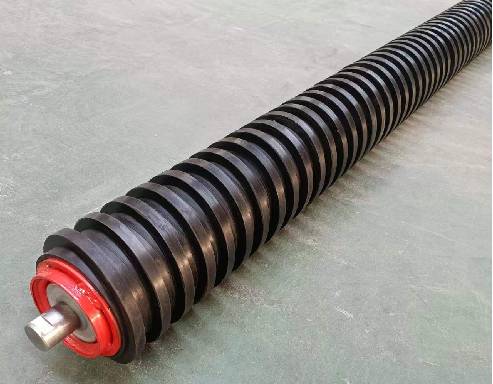 Afrikaans
Afrikaans  Albanian
Albanian  Amharic
Amharic  Arabic
Arabic  Armenian
Armenian  Azerbaijani
Azerbaijani  Basque
Basque  Belarusian
Belarusian  Bengali
Bengali  Bosnian
Bosnian  Bulgarian
Bulgarian  Catalan
Catalan  Cebuano
Cebuano  Corsican
Corsican  Croatian
Croatian  Czech
Czech  Danish
Danish  Dutch
Dutch  English
English  Esperanto
Esperanto  Estonian
Estonian  Finnish
Finnish  French
French  Frisian
Frisian  Galician
Galician  Georgian
Georgian  German
German  Greek
Greek  Gujarati
Gujarati  Haitian Creole
Haitian Creole  hausa
hausa  hawaiian
hawaiian  Hebrew
Hebrew  Hindi
Hindi  Miao
Miao  Hungarian
Hungarian  Icelandic
Icelandic  igbo
igbo  Indonesian
Indonesian  irish
irish  Italian
Italian  Japanese
Japanese  Javanese
Javanese  Kannada
Kannada  kazakh
kazakh  Khmer
Khmer  Rwandese
Rwandese  Korean
Korean  Kurdish
Kurdish  Kyrgyz
Kyrgyz  Lao
Lao  Latin
Latin  Latvian
Latvian  Lithuanian
Lithuanian  Luxembourgish
Luxembourgish  Macedonian
Macedonian  Malgashi
Malgashi  Malay
Malay  Malayalam
Malayalam  Maltese
Maltese  Maori
Maori  Marathi
Marathi  Mongolian
Mongolian  Myanmar
Myanmar  Nepali
Nepali  Norwegian
Norwegian  Norwegian
Norwegian  Occitan
Occitan  Pashto
Pashto  Persian
Persian  Polish
Polish  Portuguese
Portuguese  Punjabi
Punjabi  Romanian
Romanian  Russian
Russian  Samoan
Samoan  Scottish Gaelic
Scottish Gaelic  Serbian
Serbian  Sesotho
Sesotho  Shona
Shona  Sindhi
Sindhi  Sinhala
Sinhala  Slovak
Slovak  Slovenian
Slovenian  Somali
Somali  Spanish
Spanish  Sundanese
Sundanese  Swahili
Swahili  Swedish
Swedish  Tagalog
Tagalog  Tajik
Tajik  Tamil
Tamil  Tatar
Tatar  Telugu
Telugu  Thai
Thai  Turkish
Turkish  Turkmen
Turkmen  Ukrainian
Ukrainian  Urdu
Urdu  Uighur
Uighur  Uzbek
Uzbek  Vietnamese
Vietnamese  Welsh
Welsh  Bantu
Bantu  Yiddish
Yiddish  Yoruba
Yoruba  Zulu
Zulu Idlers and Rollers in Mechanical Systems Explained for Better Understanding
Idlers and Rollers The Unsung Heroes of Machinery
In the intricate world of mechanical systems, the components that often go unnoticed play a pivotal role in the overall functionality and efficiency of various machines. Among these components, idlers and rollers stand out as essential players in the operation of conveyor systems, manufacturing equipment, and many other industrial applications. Though they may seem like simple parts, their significance cannot be overstated.
Understanding Idlers and Rollers
Idlers and rollers are cylindrical or semi-cylindrical devices that facilitate the movement of materials, reduce friction, and guide the path of belts and other moving surfaces. An idler, in particular, is a type of roller that is not directly driven by a motor; instead, it supports the weight of the material being transported, allowing for a smoother operation of conveyor systems. Conversely, rollers can be powered and are often used to propel items along a designated path.
Both idlers and rollers come in various shapes and sizes, displaying a wide array of materials and designs tailored to specific applications. Rubber, plastic, and metal are commonly used materials, with each offering unique properties that determine their suitability for different environments. For example, rubber-covered rollers can provide added grip for better traction, while metal rollers may be preferred in environments with high temperatures or heavy loads.
Functions and Benefits
The primary function of idlers and rollers is to support and guide the movement of products or materials. In conveyor systems, idlers play a critical role in maintaining belt tension and aligning the belt properly, which is vital for preventing wear and tear. Furthermore, they are integral in reducing the energy required to move heavy items, as they minimize friction between the belt and the conveyor structure.
idlers and rollers

One of the notable benefits of using idlers and rollers is their contribution to the longevity and durability of machinery. By reducing friction and wear, these components help extend the lifespan of conveyor belts and other moving parts, ultimately leading to lower maintenance costs and less frequent replacements. This can have significant economic advantages for businesses that rely heavily on automated systems.
Real-World Applications
Idlers and rollers are employed across a range of industries, including manufacturing, agriculture, mining, and logistics. In manufacturing settings, they assist in the efficient movement of materials from one production stage to another. In agriculture, these components support the transportation of grains, fertilizers, and other products through conveyor systems. Similarly, in mining, rollers help convey heavy loads of ore and minerals from extraction points to processing facilities.
Logistics and warehousing also benefit from idlers and rollers, as they enhance the functionality of sorting and distribution systems. Automated conveyor systems outfitted with these components enable rapid processing and movement of goods, thus increasing efficiency and productivity in supply chain operations.
Conclusion
In conclusion, idlers and rollers are essential components that contribute significantly to the operation of mechanical systems across various industries. Although they may not be the most glamorous parts of machinery, their reliability and performance are critical to ensuring smooth operations, reducing maintenance costs, and enhancing the overall efficiency of automated systems. As industries continue to evolve and rely more on mechanized processes, the importance of these unsung heroes will only continue to grow, underscoring the need for ongoing innovation and improvement in their design and application. Whether you're moving heavy materials in a mining operation or transporting products in a warehouse, idlers and rollers are always hard at work, silently supporting the wheels of industry.
-
Revolutionizing Conveyor Reliability with Advanced Rubber Lagging PulleysNewsJul.22,2025
-
Powering Precision and Durability with Expert Manufacturers of Conveyor ComponentsNewsJul.22,2025
-
Optimizing Conveyor Systems with Advanced Conveyor AccessoriesNewsJul.22,2025
-
Maximize Conveyor Efficiency with Quality Conveyor Idler PulleysNewsJul.22,2025
-
Future-Proof Your Conveyor System with High-Performance Polyurethane RollerNewsJul.22,2025
-
Driving Efficiency Forward with Quality Idlers and RollersNewsJul.22,2025





























